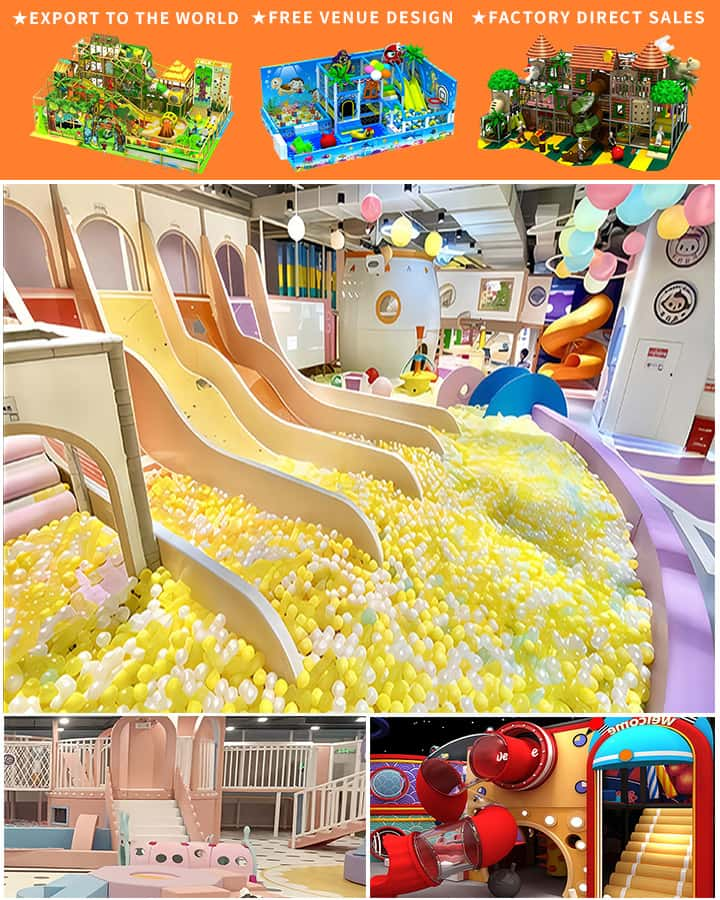Creating an indoor playground can be a fantastic way to ensure that children have a fun and engaging space to play, even when the weather outside is less than ideal. Whether you’re setting up a dedicated play area in your home or designing a commercial indoor playground, these ideas will inspire creativity and provide endless entertainment for kids of all ages.
1. Theme-Based Play Areas
Incorporating themes into your indoor playground design can transport children to different worlds and enhance their imaginative play. Consider popular themes like:
Superhero City
Create a cityscape with skyscrapers, bridges, and tunnels where kids can dress up as superheroes and save the day.
Space Adventure
Design a galactic playground with a spaceship, planets, and stars. Include a moon bounce house and a pretend control panel for interstellar exploration.
Jungle Safari
Transform a corner of the room into a jungle with vines, fake trees, and animal cutouts. Add a small play tent and some toy safari animals for an immersive experience.
2. Interactive Wall Features
Interactive walls are a great way to combine learning with play. Here are some ideas:
Magnetic Wall
Install a magnetic wall where kids can arrange magnetic letters, numbers, or shapes. This encourages learning through hands-on activity.

Climbing Wall
A safe, padded climbing wall can provide physical exercise and challenge kids’ motor skills. Ensure it has handholds and footholds suitable for their age group.
Art Wall
Set up an art station where kids can create masterpieces using chalk, paint, or even washable markers on a dedicated wall. Rotate art supplies to keep things fresh and exciting.
3. Sensory Play Zone
A sensory play zone can captivate children by stimulating their senses in a controlled environment. Consider incorporating elements such as:
Sensory Bins
Fill bins with materials like rice, sand, or beans and add scoops, cups, and small toys for tactile exploration.
Light Table
A light table with colored lights and translucent items creates mesmerizing patterns and shadows, promoting visual and cognitive development.
Sound Corner
Include instruments like xylophones, drums, and shakers, along with sound-making toys like maracas, to explore auditory sensations.
4. Physical Activity Zone
Physical activities are essential for children’s development and energy expenditure. Here are some ideas:
Indoor Slides
Compact slides or spiral slides can fit into smaller spaces and provide thrilling fun without taking up much room.
Trampoline Park
A mini trampoline offers a great way for kids to burn off energy while improving coordination and balance.
Obstacle Course
Set up an obstacle course with tunnels, balance beams, and stepping stones to develop gross motor skills and problem-solving abilities.
5. Quiet Play Area
Not all playtime needs to be high-energy; sometimes kids need a calm space to relax and focus. A quiet play area could include:
Reading Nook
A cozy reading nook with bean bags, cushions, and a small bookshelf stocked with age-appropriate books encourages literacy and imagination.
Puzzle Station
Provide a variety of puzzles ranging from simple jigsaw puzzles to more complex 3D puzzles to foster concentration and patience.
Dress-Up Corner
A dress-up area with costumes, hats, and accessories allows kids to explore different roles and scenarios, promoting creative expression.
Conclusion
An indoor playground filled with diverse and engaging features can provide children with countless hours of fun, learning, and development. By incorporating theme-based play areas, interactive walls, sensory zones, physical activity zones, and quiet play areas, you create a balanced environment that caters to various interests and needs. With a bit of creativity and planning, your indoor playground can become a magical haven where kids thrive and make unforgettable memories.




